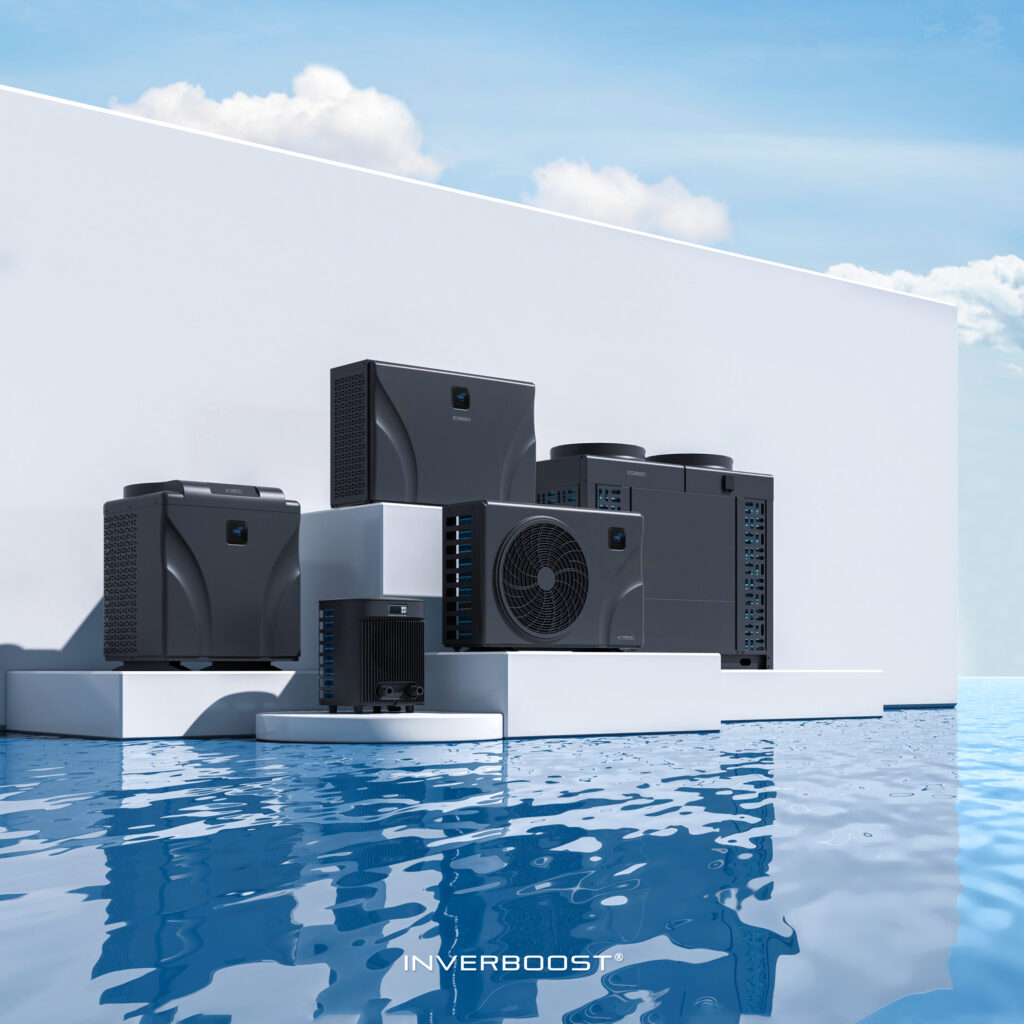What Are The Best Solutions For Heating The Pool?
Having a swimming pool with an INVERBOOST pool heat pump means having to deal with its maintenance, that is, the expenses that most affect this type of investment. The operating costs include cleaning, filtering, water treatment, and replacement, but also heating.
How To Choose The Heating System For A Swimming Pool

First of all, it is essential to evaluate a series of factors, possibly before installing the INVERBOOST pool heat pump, in order to design it consistently with the best possible heating system.
The choice varies according to the size of the pool, the type of pool, and the place where it is located, as well as the volume of water, contained. Taking care of every detail means obtaining maximum efficiency: for example, in outdoor swimming pools, avoiding shaded areas, protecting the pool with natural barriers, and covering it at night helps to maintain the optimum water temperature.
A practical, low-cost option is to use a solar cover, also called a solar tarpaulin. This cover allows you to increase the temperature of the pool water by a few degrees. A definitely economical solution that keeps the water hot and prevents it from evaporating, but it can only be used when the pool is not in use.
In addition to these useful measures to save on maintenance costs, however, a real heating system for swimming pools will be necessary. Let’s see some of them.
INVERBOOST Pool Heat Pump: Operation And Benefits
An INVERBOOST pool heat pump is the most used solution to heat pool water because it offers excellent performance and the best compromise between cost and performance in most cases.
The air/water heat pump for swimming pools absorbs the energy and heat of the external air, converts it into thermal energy, and transfers it to the water to be heated through an ex-changer.
It is obvious that heating a large amount of water in a swimming pool requires a large amount of energy: with traditional heating systems, this would result in a considerable consumption in the bill.
Instead, the pool heat pump returns 4 times the energy taken from the electricity grid, because it uses free renewable energy from the air.
This feature, therefore, allows you to heat the pool and maintain a pleasant water temperature. We remind you that heating the water is not an operation that is only needed if you want to extend the swimming season and take a bath even in the cooler seasons.
In fact, after reaching the optimal temperature (between 22 ° and 30 ° depending on use), the pool needs to be maintained, due to the dispersion of heat that occurs, for example, due to evaporation and water replacement.

Furthermore, in indoor sports pools, Pool heat pump systems have other important advantages: they allow the dehumidification of the environment through split air conditioning units and can also be used for the hot water of the showers in the changing rooms.
To sum up, the INVERBOOST pool heat pump offers an efficient, advantageous, and ecological solution, allowing you to save up to 70% compared to traditional systems, thus amortizing the investment more quickly.
If we compare the pool heater with other heating methods, with an electric heater, for example, it is easy to fall into error. An electric heater has a lower initial cost, being a device with less sophisticated technology than a pool heater, but at the same time, it requires much greater consumption and expensive terms of electricity to deliver the required heat power. The result is that you will have an initial saving, but a high energy cost later on.
The INVERBOOST pool heat pump is not as effective as in colder climates because this type relies on the ambient temperature in the air to heat the pool. This is similar to how an air conditioner cools your home, but the expected result is the opposite. These heaters are not cheap, but cheaper than gas pool heaters.



